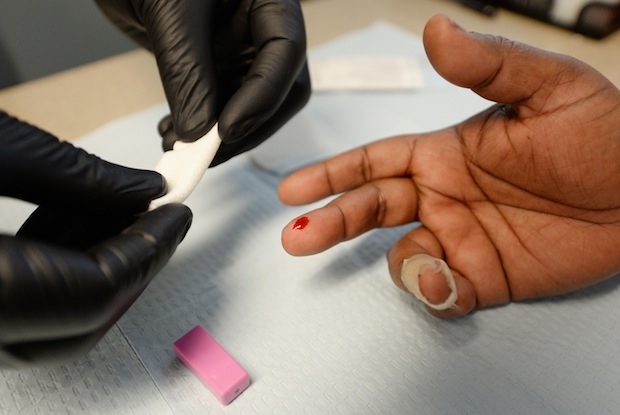In a week in which the world is once again invited to consider the prospect of climatic Armageddon, it would be easy to miss the news of remarkable progress against one of the greatest killers known to mankind. UNAIDS, the United Nations agency responsible for the global battle against Aids, forecast that the epidemic will very likely be over by 2030. That does not mean that the disease will be declared extinct by then — as smallpox was in 1979 and rinderpest in 2011 — but that the incidence of transmission of HIV and death from Aids will have fallen to levels low enough to constitute a chronic public health problem rather than an epidemic.
Already, worldwide deaths from the disease have fallen by a third since a peak of 2.3 million in 2005. New infections are only half what they were in 2000, while the number of people living with the disease is largely unchanged. It is estimated that 14 million life-years have been saved by treatment in the past decade, and 900,000 deaths averted last year alone. The UN can be proud of its role here: it is at its best when co-ordinating international efforts to eradicate disease.
The Aids breakthrough stands as a salutary lesson for scientists, government officials and all others who confront disease, climate change or economic collapse. Public discourse in the past 20 years has been characterised by a series of grim prophecies, none of which in the event has come even close to threatening the human race. If a disturbing trend is extrapolated far enough, it is easy to fear the worst. But humans often fail to account for their own ingenuity, the very factor that has led us into a world wealthier and healthier than any before.
Potential threats always gain more publicity than the progress made against them. In 2005, the UN said that as many as 150 million might die from the H5N1 strain of bird flu. But people took evasive action and there were fewer than 400 deaths worldwide. During the vCJD crisis, when 750,000 cattle were infected, the BBC published a piece by Professor Hugh Pennington warning that ‘We have to prepare for thousands, tens of thousands, hundreds of thousands of cases of CJD.’ There have been just 176 UK deaths involving vCJD.
Aids, by contrast, has taken 35 -million lives worldwide. But left unchecked, it could well have proved deadlier still. In 2002, the British Medical Journal carried an article by the president of a respected Aids charity predicting that ‘Aids will surpass the Black Death as the world’s worst pandemic.’ In the same year the US National Intelligence Council predicted the deaths of a quarter of the population of nine Southern African countries within a decade. Instead pharmaceutical companies, churches, campaigners and — yes — governments have altered the course of history. The UN now says that an Aids-free generation is ‘not only possible, but imminent’.
While an Aids vaccine remains elusive, anti-retroviral drugs have been developed which suppress the infection and can drastically reduce the dangers of transmission. HIV infections among children have been almost eliminated in the rich world. We have also got much better at treating so many of the secondary infections such as tuberculosis which actually cause the death. Ten years ago, just 100,000 were on life-saving treatments. Now it’s eight million.
On top of the medical battle against HIV and Aids in the third world come the social measures designed to reduce infection. At times, this has resembled an ideological battleground between abstentionists and liberationists. But international efforts have been so successful because they have not stuck to just one ideology: they have involved a wide variety of approaches, from advocating restraint from risky sexual practices to fairly brutal acts of utilitarianism such as supplying drug addicts with clean needles.
Of course, you can all but eliminate your chances of succumbing to a sexually transmitted disease by abstaining from casual sex. The new UNAIDS report is rich in praise for the work of Catholic agencies, however much they are despised by others in the field. But the fight against Aids has been successful because where public health is involved there is no point simply in preaching: you have to follow an approach of harm reduction with those who will not change their behaviour.
This week, the Department for International Development sent £1 billion to one of the better-run international charities, the Global Fund for Aids, Tuberculosis and Malaria. Given how much of our aid budget is wasted, it is encouraging to see taxpayer money spent on a good cause. The fight against malaria is going almost as well as that against Aids: the number of deaths is down a fifth from its 2004 peak. The Global Fund finances drugs used in Africa, but efficiencies in the pharmaceutical industry are as large a factor as philanthropy. An American programme of anti-retroviral therapy can now support twice as many people as it could four years ago, simply due to the fall in price of the drugs.
An alliance of science, industry, global capitalism and philanthropy is making more progress against humanity’s biggest killers than was ever thought possible. As the ongoing violence in Syria reminds us, much is still wrong in the world. But it’s vastly outweighed by what is going right.






Comments